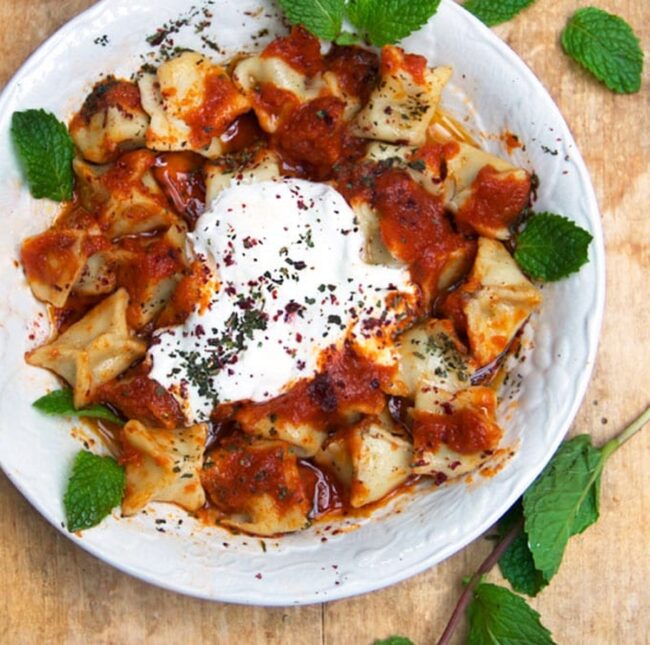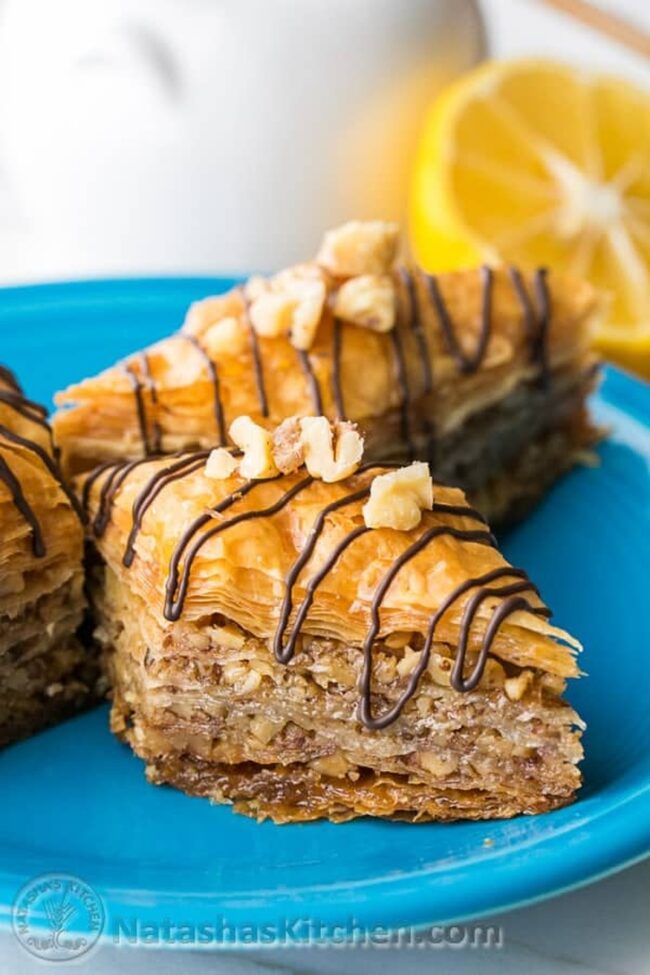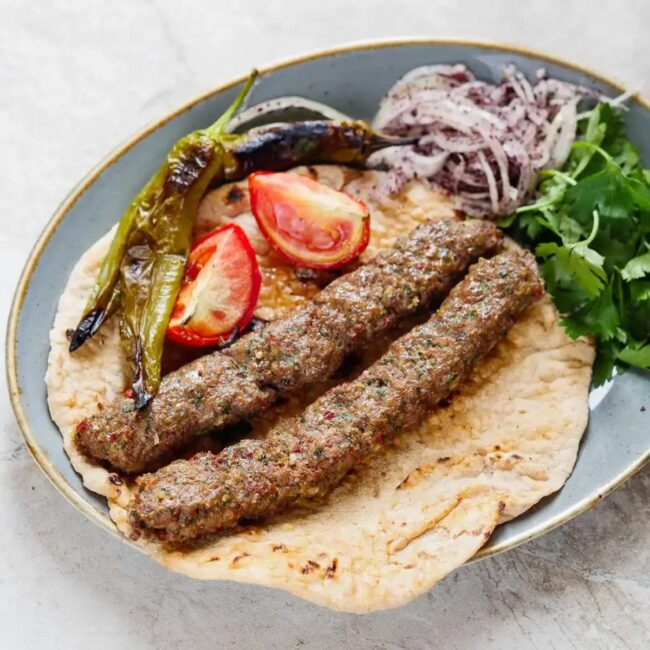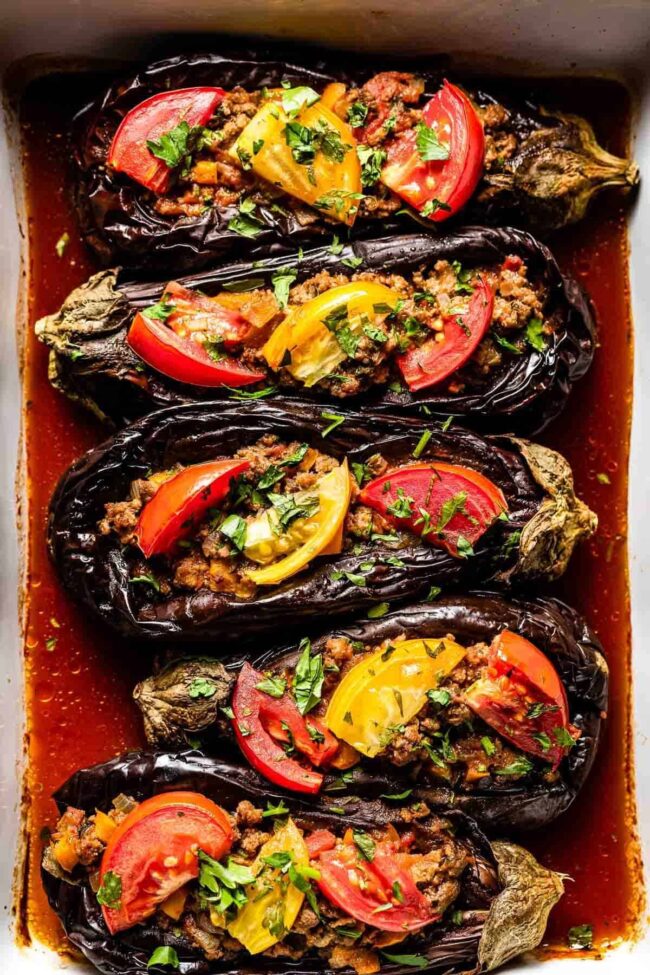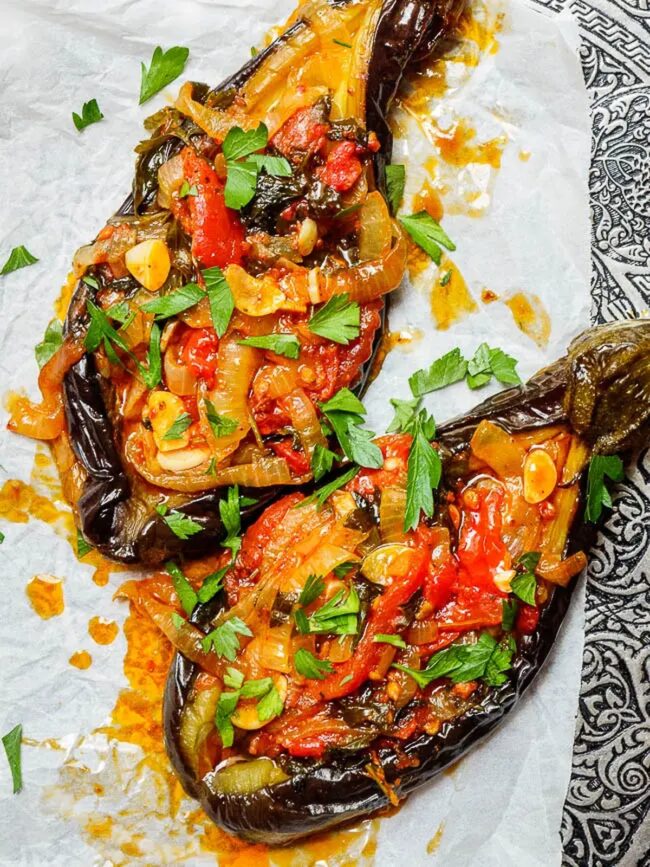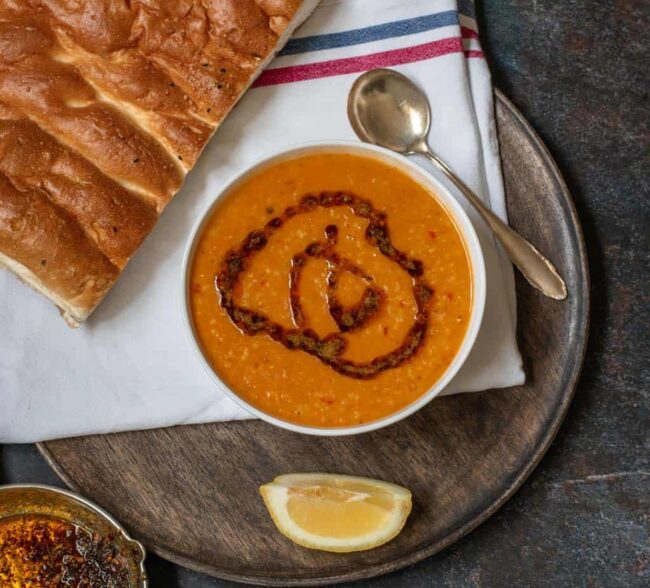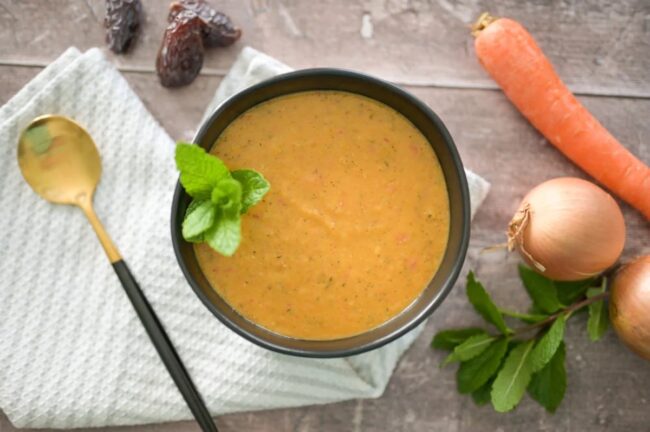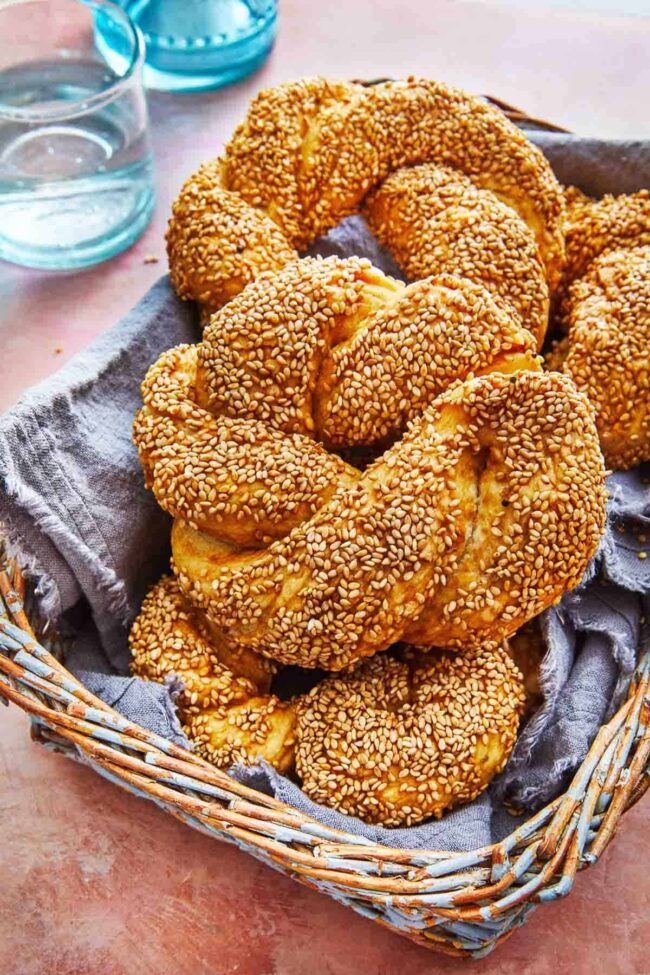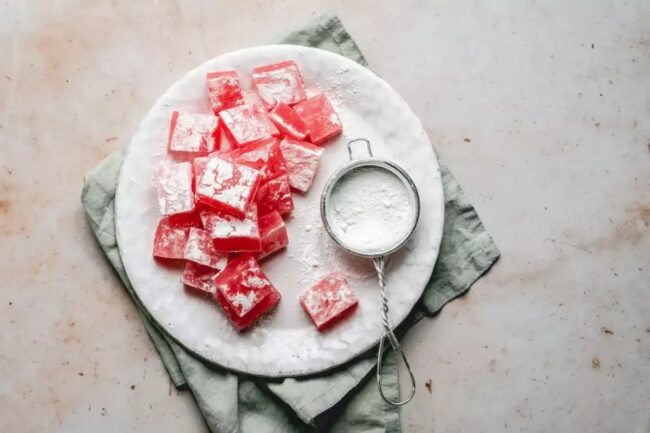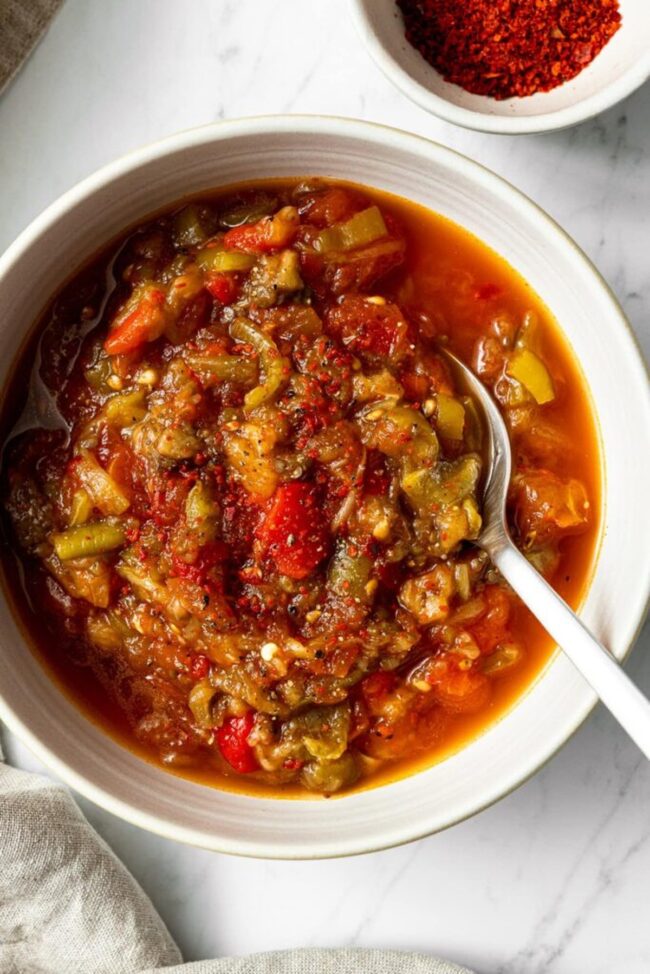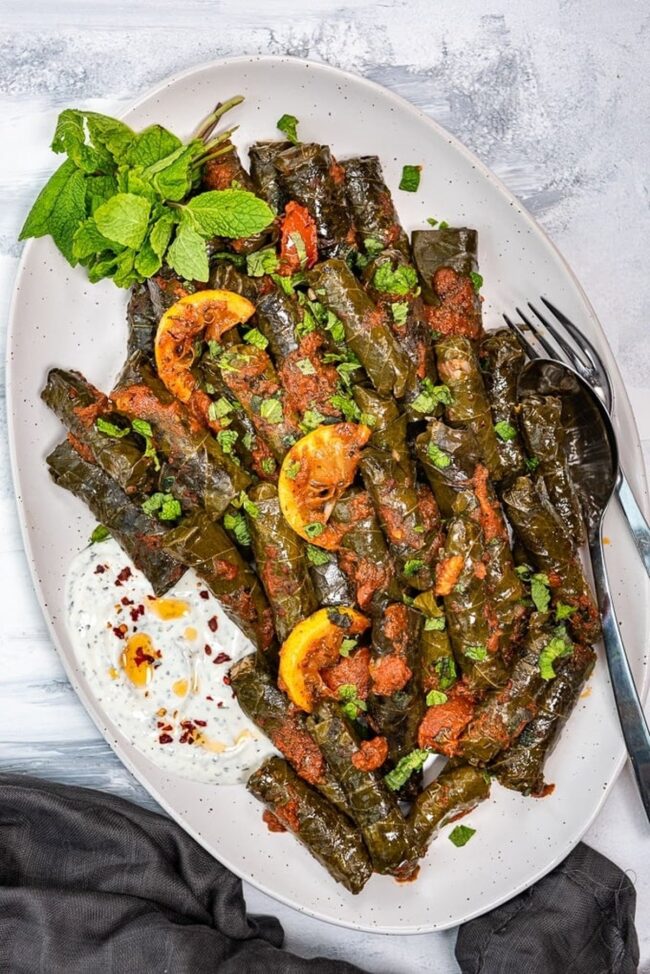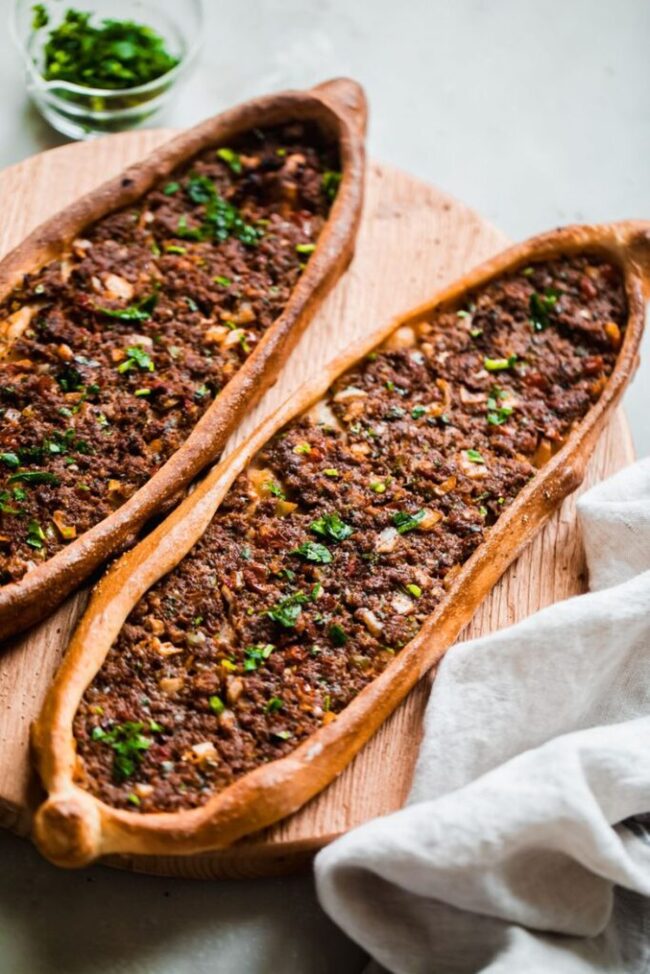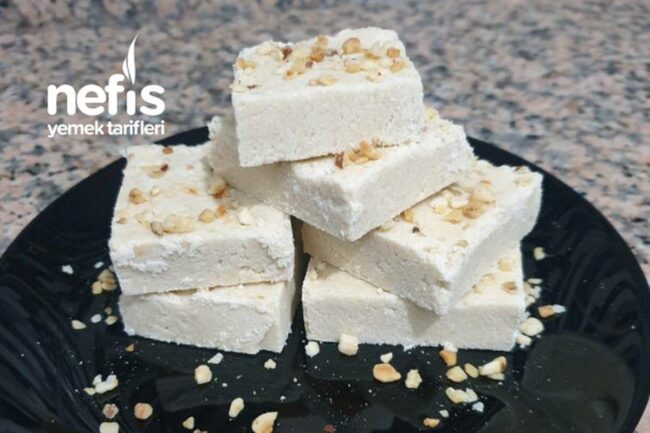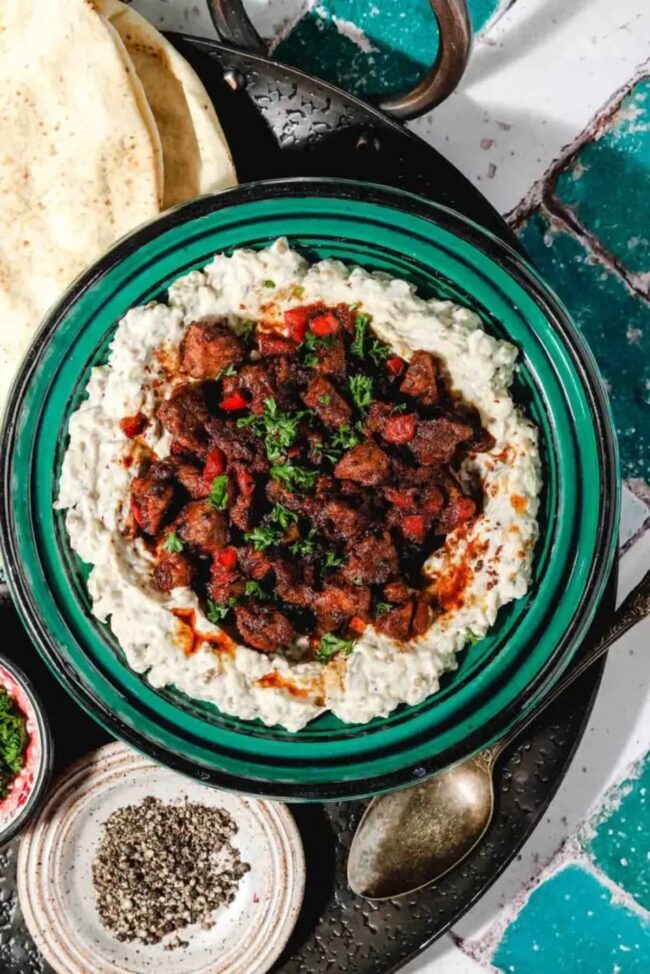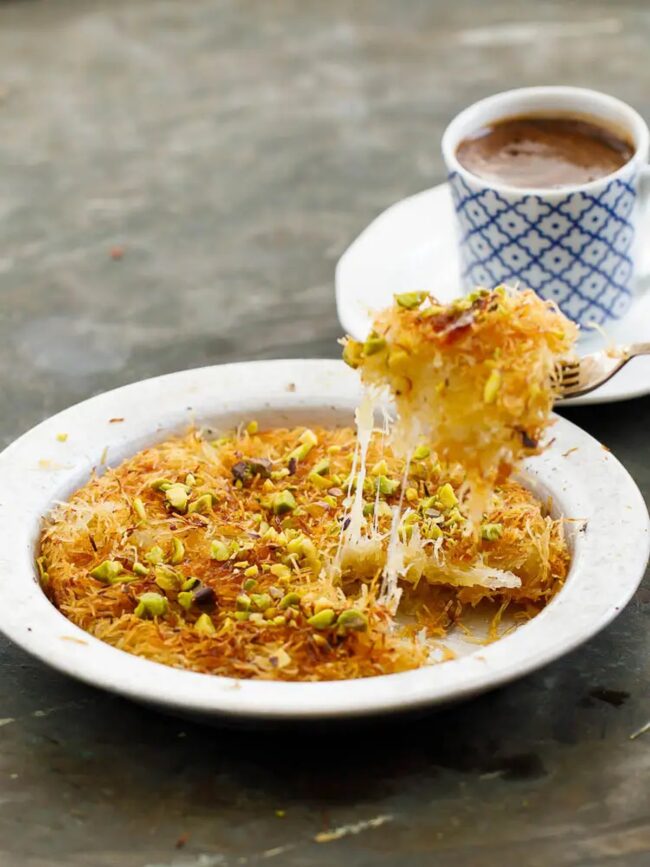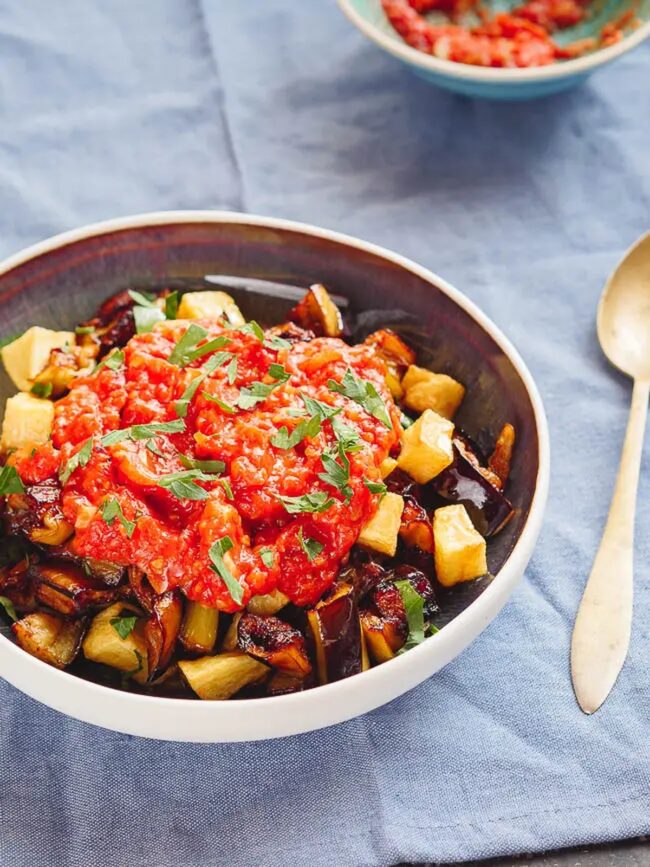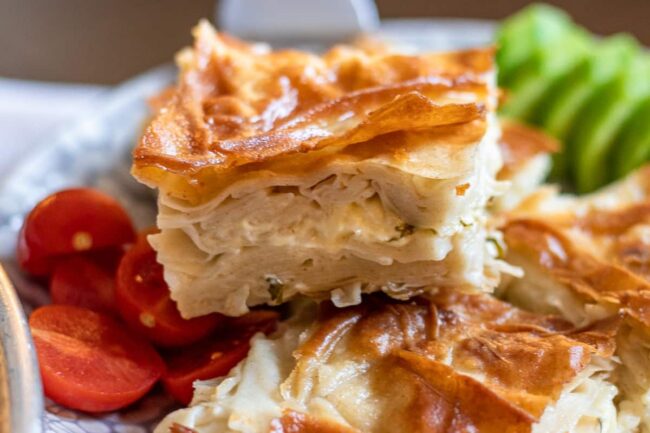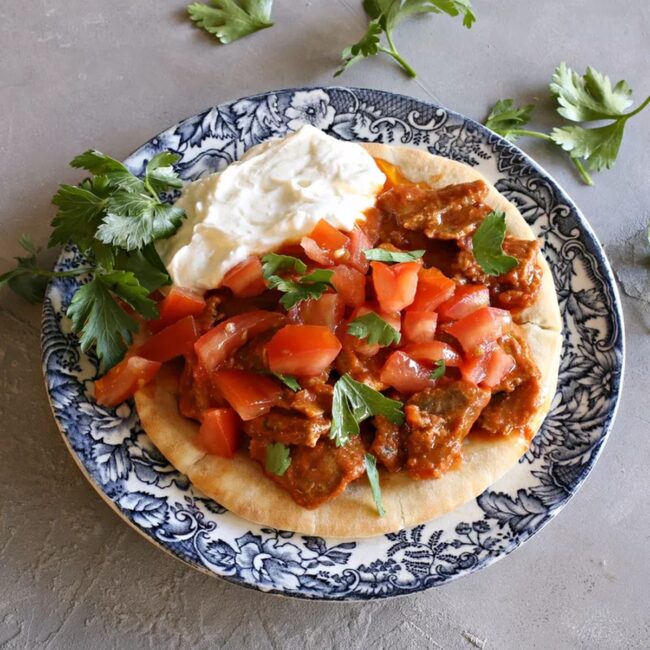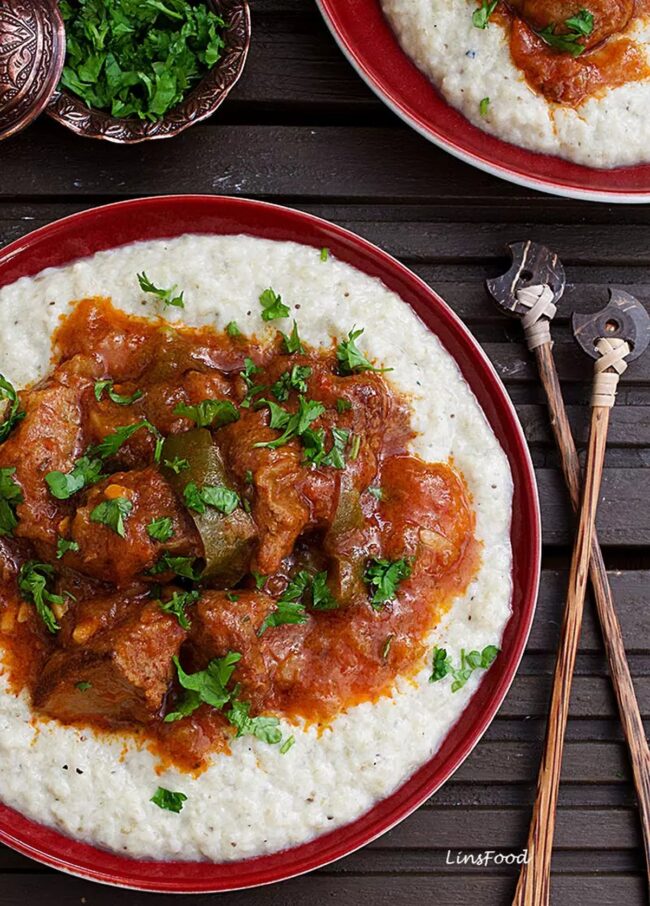25 Delicious Turkish Recipes to Explore
Turkish recipes blend Middle Eastern and Mediterranean flavors for truly unique meals.
Savory kebabs and sweet baklava offer a diverse range of taste experiences.
Fresh herbs, aromatic spices, and wholesome ingredients create balanced and enticing dishes.
These recipes inspire culinary creativity and introduce exciting new flavors to your kitchen.
25 Turkish Recipes Full of Vibrant Flavors
Turkish dishes bring vibrant spices and fresh ingredients to your meals. Savor authentic recipes inspired by the rich culinary traditions of Turkey.
Lahmacun
Often referred to as Turkish pizza, lahmacun features a crispy flatbread topped with savory minced meat and vegetables.
A simple dough forms the base, made from flour, yeast, salt, and olive oil.
After allowing the dough to rise for 1-2 hours until it doubles in size, prepare a delicious topping by mixing ground lamb or beef with finely chopped onions, tomatoes, and peppers.
Spices like cumin and paprika enhance its flavor profile beautifully.
Thin circles of rolled-out dough receive a generous spread of this meat mixture before baking in a hot oven for 5-7 minutes until golden edges appear.
A squeeze of lemon juice along with fresh parsley brightens each serving perfectly; enjoy this easy meal anytime!
Manti
Delicate parcels of flavor, manti are tiny Turkish dumplings filled with spiced ground meat.
Wrapped in thin egg pasta dough, seasoned lamb or beef creates a delightful filling.
Boiling them until tender ensures a satisfying texture that everyone will enjoy.
When served, these dumplings shine with toppings like garlicky yogurt sauce and drizzles of spiced butter or olive oil; some variations even include tomato sauce for added richness.
Time spent preparing manti pays off when guests admire this traditional dish from Turkey.
A true culinary gem awaits those willing to try their hand at this recipe!
Kofte
Kofte, traditional Turkish meatballs, are known for their rich flavor and soft texture.
Ground beef or lamb serves as the base, combined with onions, garlic, cumin, and parsley to enhance the taste.
Mixing these ingredients requires a good kneading to ensure everything blends well.
After shaping them into small balls or flat patties, cooking can take place on a grill or in an oven until they turn golden brown.
Hot kofte pairs nicely with rice or salad and tastes great wrapped in pita bread.
Adding a tangy yogurt sauce elevates this dish even further for those who crave street food flavors.
Menemen
Serving menemen hot from the skillet makes it a delightful way to start the day.
This Turkish breakfast dish brings together eggs, tomatoes, and peppers for a hearty meal.
The preparation begins with softening onions and peppers in olive oil, followed by adding grated tomatoes that simmer into a rich sauce.
Afterward, cracking eggs directly into this mixture allows for gentle scrambling until they are just set.
Crusty bread complements this dish perfectly for dipping or savoring alongside each bite.
Personal touches like cheese, herbs, or spicy peppers can enhance its flavor to match individual preferences.
Baklava
Layers of flaky phyllo dough create the base for baklava, a delicious Turkish dessert enjoyed worldwide.
Chopped nuts like pistachios or walnuts add crunch and flavor between these layers.
Preparing the syrup is essential; sugar and water boil together before honey gets added, creating a sweet topping that enhances every bite.
After layering buttered phyllo sheets with nuts, diamond shapes get cut into the top for an elegant finish.
Baking occurs at 350°F (175°C) until golden brown takes about 35-40 minutes.
Pouring cooled syrup over hot baklava ensures it absorbs sweetness perfectly right after coming out of the oven.
Adana Kebab
Cooking Adana kebab at home offers a delightful taste of Turkey.
Ground lamb, seasoned with red pepper flakes, paprika, and cumin creates a spicy flavor that's exciting yet balanced.
Grilling over charcoal adds an unbeatable smoky touch that enhances the dish.
Serve these kebabs alongside rice, flatbread, and grilled vegetables for a satisfying meal.
A yogurt sauce complements the spices perfectly by providing a cool contrast to the heat.
This dish can truly elevate your next barbecue or dinner gathering into something special for all to savor.
Karniyarik
Karniyarik represents a cherished dish from Turkey, highlighting stuffed eggplants.
A zebra pattern forms on the eggplants by peeling strips of skin away.
Filling them requires cutting a slit and adding a tasty mixture of ground beef, onions, tomatoes, and spices.
Sliced tomatoes and peppers sit on top to enhance the presentation.
Surrounding the stuffed veggies with tomato sauce in the baking dish adds moisture during cooking.
After baking until tender, this dish reveals rich flavors that truly celebrate Turkish culinary traditions.
Imam Bayildi
Served at room temperature or cold, Imam Bayildi shines on hot summer days.
This traditional Turkish dish features eggplants filled with a savory mixture.
Start by slicing the eggplants lengthwise and salting them to draw out excess moisture.
While they rest, prepare a filling of sautéed onions, tomatoes, garlic, and spices for added depth of flavor.
Stuff the eggplants with this flavorful blend and simmer in a rich tomato sauce until tender.
A squeeze of lemon enhances the taste when it’s time to serve this delightful meal.
Ezogelin Corbasi
A hot bowl of ezogelin corbasi warms the soul with its rich flavors.
This Turkish soup features red lentils, bulgur, and rice for a satisfying meal.
Sautéing onions in olive oil brings out their sweetness, while garlic and tomato pastes add depth.
Lentils, bulgur, and rice blend beautifully into the mix before water or stock is added to create a delightful broth.
Simmer until everything becomes tender for that perfect texture.
A sprinkle of salt, pepper, and dried mint elevates the taste before serving it with lemon juice alongside crusty bread for an extra touch.
Gozleme
Hot and crispy, gozleme is a beloved Turkish flatbread filled with delicious ingredients.
The dough comes together easily using just flour, water, and oil.
For the filling, creativity shines through with options like ground meat, cheese, spinach or potatoes seasoned to taste.
After rolling out the dough into thin circles and placing the filling on one side, fold it over and press to seal securely.
Cooking happens in a dry skillet for 1-2 minutes on each side until golden brown spots emerge.
Sliced into triangles when served warm makes this dish an appealing snack or light meal choice for any occasion.
Mercimek Corbasi
This Turkish lentil soup, known as mercimek corbasi, has a rich flavor and velvety texture that many people love.
Preparation is straightforward; red lentils combine with onions, garlic, and tomato paste to create a hearty dish.
Traditional spices like cumin and Aleppo pepper enhance the taste beautifully.
After simmering everything together for about 30 minutes, blending results in a smooth consistency.
A squeeze of lemon adds brightness to the final bowl of soup.
Many enjoy it as an appetizer or light dinner at Turkish restaurants around the world.
Simit
Simit, a beloved bread from Turkey, has a delightful ring shape covered in sesame seeds.
Street vendors and bakeries commonly sell this tasty treat throughout the country.
The process begins with mixing flour, water, and salt to create a simple yeast dough that rises beautifully.
After rising, the dough is divided into long ropes which are twisted together into circles.
A dip in molasses adds flavor before rolling them in sesame seeds for extra crunchiness.
When baked to golden perfection, simit offers a crispy outside and soft inside that makes it perfect for breakfast or as an afternoon snack paired with tea.
Turkish Delight
Many people enjoy Turkish Delight, a sweet treat with a rich history.
Creating this delicacy at home is quite easy and requires just a few ingredients.
Start by combining sugar, lemon juice, and water in a pot; heat until the mixture reaches a boil.
In another bowl, mix cornstarch with cold water before adding it to the hot syrup while stirring continuously.
As the mixture thickens on low heat, frequent stirring ensures even consistency.
Once it cools in a lined pan and firms up, cut it into small squares dusted with powdered sugar to keep them from sticking together.
For added flavor excitement, consider including rose water or nuts during preparation for delightful variations.
Patlican Salatasi
A delicious Turkish eggplant salad called Patlican Salatasi features roasted eggplants that develop a smoky flavor.
After roasting, the skin comes off easily, and the soft flesh is chopped into bite-sized pieces.
Garlic, lemon juice, and olive oil blend together to create a tasty mix.
For those who love creaminess, yogurt can enhance the texture beautifully.
Chopped parsley and diced tomatoes add vibrant color and freshness to each serving.
Often enjoyed as an appetizer in Turkish meals, this dish goes well with bread or alongside grilled meats for a satisfying experience.
Dolma
A squeeze of lemon juice adds a refreshing touch to the dish.
Cooking dolma involves placing stuffed vegetables or grape leaves in a pot, covering them with broth or water, and simmering until they become tender.
Stuffing each leaf or vegetable requires leaving some room at the top so that rice can expand during cooking.
The filling typically combines rice, onions, herbs, and spices; ground meat may also be included for added richness.
Popular choices for stuffing include grape leaves and various peppers.
This Turkish delicacy serves as an inviting appetizer or side dish that can be enjoyed warm or at room temperature.
Pide
Baking pide results in a crispy outer layer paired with a soft, chewy inside.
This Turkish flatbread resembles pizza and is easy to make at home using basic ingredients such as flour, yeast, water, and salt.
Kneading the dough and allowing it to rise comes first in the process.
Afterward, shaping it into an oval followed by adding toppings brings flavor; common choices are cheese, meat, or vegetables.
Edges of the dough fold up like a boat to keep toppings secure during baking.
A hot oven finishes off this dish until it turns golden brown for an enjoyable experience straight from the oven.
Saray Helvasi
A unique dessert called Saray Helvasi has roots in the Ottoman palace, where it was served to sultans.
This Turkish delight features a texture that balances slight graininess with smoothness.
Made from semolina flour, butter, and sugar, the mixture cooks into a thick golden paste.
Often topped with pine nuts or pistachios for added crunch, some variations include milk or cream for extra richness.
Shaped into domes or squares before slicing makes serving easy and elegant.
Sipping strong Turkish coffee or tea alongside enhances the experience beautifully.
Alinazik Kebab
A delightful experience awaits with Alinazik Kebab, a dish hailing from Gaziantep, Turkey.
This meal showcases a creamy base made from grilled eggplants mixed with garlic and yogurt.
Minced lamb cooked with onions, tomato paste, and spices adds rich flavor on top.
The final presentation features the eggplant mixture spread on a plate, crowned by the savory lamb.
Enjoy this dish hot alongside fresh bread for an authentic taste of Turkish cuisine at home.
Exploring these flavors offers an exciting culinary adventure that brings warmth to any gathering.
Kunefe
This Turkish dessert captivates with its blend of flavors and textures.
A delightful combination of shredded kadayif dough, melted cheese, and sweet syrup creates a memorable experience.
To prepare kunefe, butter a pan and layer half the kadayif at the bottom.
Place sliced cheese on top before adding the remaining dough, gently pressing it down.
Cooking on low heat until both sides turn golden brown ensures perfect crispiness.
Pouring cooled sugar syrup over the hot pastry adds an extra layer of sweetness that enhances every bite.
Saksuka
Saksuka showcases a delightful mix of eggplants, peppers, and sometimes potatoes.
Olive oil helps soften these vegetables through frying before they receive a rich tomato sauce on top.
Served hot or at room temperature, this dish shines as both an appetizer and a side dish.
Adding garlic yogurt enhances the flavor for those who enjoy extra zest.
Vegetarian-friendly options abound with saksuka, making it an excellent choice alongside grilled meats or fish.
Differentiating from shakshuka, which includes eggs, saksuka highlights the fresh taste of vegetables instead.
Borek
A crispy and golden brown treat awaits those who bake borek in the oven.
This Turkish pastry, made from thin layers of yufka dough, delights with various fillings such as cheese, meat, or vegetables.
Different shapes bring unique charm; whether rolled like cigars or layered in a dish, each form adds to its appeal.
Keeping the yufka moist between damp towels ensures perfect texture during preparation.
A simple egg wash or oil brushed on enhances the crust's color and flavor before baking.
Enjoying it hot makes for a satisfying snack any time of day; breakfast or afternoon tea feels special with this dish on the table.
Su Boregi
A flaky, cheesy pastry awaits those who try su boregi.
This Turkish delight features layers of thin dough known as yufka, which are briefly boiled in salted water for tenderness.
Once softened, the yufka sheets get layered with a delicious feta cheese filling and brushed with melted butter for added richness.
Before baking, an egg and yogurt mixture coats the top layer to achieve a beautiful golden finish.
Baking transforms it into a crisp exterior while keeping the inside soft and creamy.
Su boregi serves wonderfully as an appetizer or main dish at breakfast or brunch gatherings.
Iskender Kebab
Melted butter adds a luxurious finish to Iskender kebab, enhancing the dish's rich flavors.
Serving this meal brings people together for an authentic Turkish experience.
Warm pita bread forms the base, cut into squares to hold all the delicious toppings.
Crispy cooked meat sits atop, marinated in grated onions, olive oil, and oregano for maximum flavor.
A sauce made from simmered tomatoes mixed with garlic and spices drizzles over everything perfectly.
For a creamy touch, yogurt on the side complements each bite beautifully.
Cig Kofte
Cig kofte, a beloved dish from Turkey, combines bulgur wheat with an array of spices and fresh herbs.
Softening the bulgur in water begins the preparation process.
Tomato paste and pepper paste blend with spices like cumin and red pepper flakes, creating a rich flavor profile.
Kneading this mixture by hand for 10 to 15 minutes ensures all ingredients meld together beautifully.
Finely chopped onions, parsley, and olive oil enhance the texture before shaping them into small oval patties.
Serving alongside lettuce leaves for wrapping and lemon wedges adds freshness to each bite.
Hunkar Begendi
Savoring Hunkar Begendi reveals why this dish was adored by Ottoman sultans.
The rich flavors of tender lamb stew pair beautifully with a smooth eggplant puree, creating an unforgettable experience.
Lamb pieces brown in olive oil, while onions soften before adding garlic, tomato paste, and spices.
Stock enriches the mix as it simmers until the meat becomes tender.
Eggplants roast in the oven until they soften; their flesh combines with a creamy bechamel sauce made from butter, flour, and milk along with some cheese for added richness.
This royal dish serves as a testament to Turkey's culinary heritage and promises to impress anyone who tries it.
Introduction to Turkish Cooking
Turkish cooking blends Mediterranean, Middle Eastern, and Central Asian influences. It features bold spices, fresh vegetables, and flavorful meats.
Historical Food Impact
The rich history of Turkish cuisine stems from the traditions of the Ottoman Empire.
Many recipes that people savor today originated in the kitchens of royal courts.
Elegant desserts, such as baklava, showcase this culinary heritage.
Central Asian influences appear in kebabs and yogurt dishes, while stuffed vegetables and mezze highlight connections to Middle Eastern flavors.
Mediterranean elements shine through with seafood and herb-infused meals.
This blend creates a diverse and flavorful experience that reflects its extensive roots across regions.
Common Cooking Staples
Fresh, local ingredients play a vital role in Turkish cooking.
Staples like bread accompany every meal, with various types ranging from flat pide to hearty village loaves.
Olive oil serves as an essential element in numerous recipes, enhancing flavors and richness.
Vegetables such as eggplant, tomatoes, and peppers frequently appear on the table alongside grains like rice and bulgur wheat.
Meats including lamb and chicken often take center stage in many dishes.
Flavorful spices such as mint, parsley, cumin, and red pepper flakes add depth to meals while nuts like pistachios contribute delightful crunchiness to both savory dishes and desserts.
Regional Dish Differences
Unique specialties highlight Turkey's rich culinary landscape.
Each region offers its own flavors, shaped by local ingredients and traditions.
Coastal regions emphasize seafood, while the Black Sea area is famous for dishes featuring corn and anchovies.
Central Anatolia showcases hearty meat-based meals and stews that satisfy hunger.
Spicy kebabs paired with bulgur wheat dominate the southeast’s offerings.
Istanbul stands as a melting pot of these diverse cuisines, showcasing influences from all over Turkey in its vibrant food scene.
Cooking Turkish Dishes Like a Pro
Cooking Turkish dishes like a pro involves using fresh ingredients and authentic techniques. Mastering key spices and cooking methods enhances every dish.
Grilled & Skewered Foods
Turkish cooking showcases grilling, especially with meat dishes.
Kebabs made from lamb, beef, or chicken paired with vegetables are common.
Marinating the meat in olive oil, lemon juice, and spices enhances its flavor significantly.
Charcoal grilling provides a wonderful smoky taste that elevates the dish.
Turning skewers often ensures even cooking; this method creates a crispy outside while keeping the inside tender and juicy.
Whole fish or vegetable skewers also make delicious options; brushing them with olive oil and herbs adds extra appeal before serving alongside lemon wedges and fresh bread.
Slow Cooked Dishes
Slow cooking plays a crucial role in many Turkish stews and casseroles.
This technique softens tough meats and blends flavors beautifully.
A heavy-bottomed pot or clay dish works best for this cooking method, ensuring even heat distribution.
After browning the meat and vegetables, adding broth or tomato sauce brings everything together perfectly.
Gentle simmering over several hours results in tender meat that practically falls apart.
Popular choices include bean stews, stuffed vegetables, and rich soups that showcase the depth of spices used throughout this culinary tradition.
Baked Pastries
Mastering the art of baking is essential for creating Turkish bread, pastries, and pide.
A wood-fired oven provides a perfect crisp crust; however, using a pizza stone at home can achieve similar results.
Allow dough to rise slowly to enhance both texture and flavor.
For delightful desserts, working with phyllo dough becomes important; layering thin sheets with butter or oil gives wonderful results.
Savory pastries benefit from fillings like cheese or vegetables before they go into the oven.
Brushing the top with egg wash adds an appealing golden finish as they bake until flaky and crisp.


